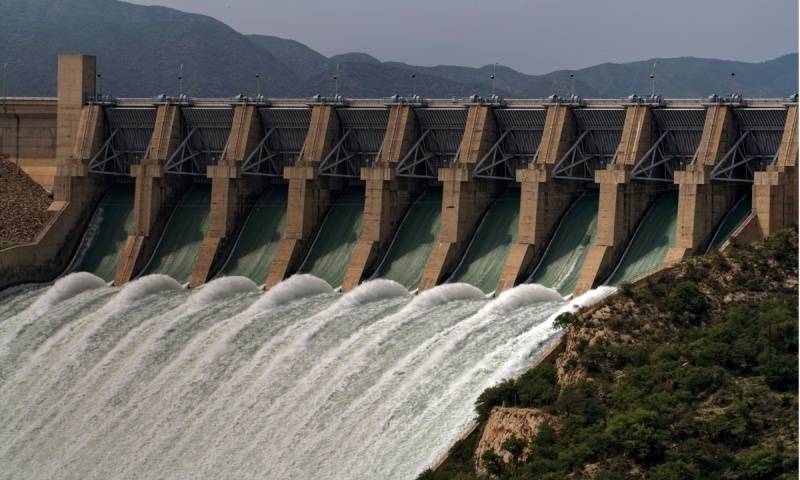The great socio-economic divide between the countries of the northern and the southern hemisphere originates from over consumption of resources in the former and the over population in the latter. The access of the countries of the northern hemisphere e.g. US and the European Union to vast natural resources- coal, gas, oil etc., which are ca. three fourths that of the world, therefore, determines the way the people in these countries view problems related to environment e.g. water, food and energy elsewhere. And notwithstanding it’s not ratifying the Kyoto protocol (1997), US increased its emissions by 12%, it continued , however, to add to forests, greenways and trees [Renewed every year with the young and new saplings to increase the size of her sink for green house gases (GHG)], -and later, Canada, which withdrew itself from the protocol continues to emit exorbitant amounts of CO2 despite its target to achieve 30% reduction by 2030.
France, however, reduced its average, annual CO2 emissions by 13%-from 564megatons in 1990 to 490megatons in 2013, compared to 5.2% required by the protocol by 2012, the emergence of some fifty new, big emitters in the region and elsewhere i.e., China, India, Turkey, Egypt, Brazil etc., in the meantime, has added to environmental catastrophs globally, and Pakistan, with the lowest per capita emissions in the world is being worst hit today. And, water and food insecurity, and diseases like cholera, gastroenteritis, typhoid, dengue etc., due to drought, and deluge continue to play havoc with the life and property of people of the country.
Improvement of air quality, reduction in the concentrations of pollutants such as sulphur oxides,carbon monoxide, nitrogen oxides, and particulates, ban on the use of CFCs from air conditioning and removal of lead from gasoline in the US and elsewhere constitutes, however, a big leap forward for the Montreal Protocol.
In USA, where the environmental considerations and decision making have always been subject to concerns of the people and the various political parties, whatever they are, they have upheld the peoples’ concern in environmental issues. Though a rare phenomenon, while the then US president, George W. Bush was at daggers drawn with the leading US environmentalist and NASA climate scientist, Dr. James E. Hansen for his stance on green house gases and climate change, it, however, failed to subdue the growing American environmentalism. Earlier, soon after the celebration of the first Earth Day in 1970, president Richard Nixon established through an ordinance, the epoch making Environmental Protection Agency in the country, while the congress was sitting.
The recent developments in politics, policies or approach for clean energy, air and water could be termed a great paradigm shift in US history. And “most important politically”, as pointed out by environmentalist, Professor Rosenbaum, they “originate from a durable national consensus that environmental protection must be a first-order public concern”.
The widespread, frequent inundations in Pakistan, point to the urgent need of large reservoirs for storage of water e.g. big dams, including the much needed, rain fed, Kala Bagh Dam, and increasing overall catchment areas by deepening of existing rivers, canals etc., apart from small dams, new lakes and canals. Dry digging a new canal, parallel to Suez by Egypt recently- single handedly, using its own resources, marks the political will and self reliance, much sought after in Pakistan. At the pre-COP21 “Pakistan sey Paris” Forum, a brainchild of the French ambassador, HE Mrs. Martine Dorance and officers of the embassy held recently at Lahore, by teaming with the various UN agencies, academic and government institutions, and NGOs, the importance for public-centric, combined mitigation-adaptation approaches was stressed to overcome the environmental problems inflicting our socio-economic ambience.
The growing interest of students of universities and academia, and of the civil society in environment elsewhere, e.g. NY Institute of Technology NY.,The University of Pennsylvania, the public-private partnership in cleaning Cyuhoga river in Cleveland, and Charles Sturt University –city council of Wagga Wagga, Australia, and the “One student –One tree” project started at GCUF and various city areas in 2010 projected a role that the academia and civil society could play together to mitigate climate warming.
While the World Bank in its report declared Pakistan in 2008 as a water stressed country, it is highly deplorable that 34 MAF of water- an amount equivalent at least to five KBDs, continues to be lost annually to the Arabian sea. Quite frequently, there are water shortages of 30-35 MAF at the time of Rabi sowing in the country and if waters of Kabul river were diverted further, this will reduce water flows in the Indus by another 14 %.
According to Small Dams Organisation, it has built 60 small dams in the Pothohar plateau in the Punjab with sites for additional 19 small dams. which it deems too small to make any difference to the large quantity i.e.104 MAF of water which had been available for irrigation ever since Tarbela dam was commissioned. This does not negate the significance of small dams for a water scarce country like Pakistan.
As of today, KBD is singular as a project which was approved by the council of common interests some sixty years ago involving a substantial outlay of public money on a technical study and feasibility report, water experts from all over the country have been enumerating various benefits of the dam, based on water and food insecurity, and energy shortfalls versus its opposition by certain political groups. Certainly, only big dams like Kala Bagh Dam should be the first order public concern of this country.






